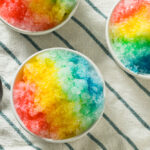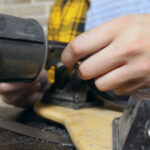DIY Mud Kitchen: Ignite Imagination and Exploration in Your Backyard
Are you looking for a creative and engaging way to encourage imaginative play for your kids? Look no further than a DIY mud kitchen! By upcycling old furniture, you can create a magical outdoor play space where children can explore, create, and have messy, mud-filled adventures. In this comprehensive guide, we'll walk you through the step-by-step process of building your own DIY mud kitchen using recycled materials. Let's get started!
Introduction to Mud Kitchens
A mud kitchen is a play area for children that mimics an outdoor kitchen, providing them with the opportunity to engage in sensory play and role-play activities. It encourages imagination, creativity, and hands-on exploration. Mud kitchens typically consist of various play surfaces, sinks, shelves, and storage areas where children can mix, pour, and create with mud, sand, water, and natural materials.
Finding the Perfect Furniture for Your Mud Kitchen
One of the great things about creating a DIY mud kitchen is that you can repurpose old furniture, giving it a new life and purpose. Look for items such as old wooden tables, dressers, or cabinets that you no longer need or find at thrift stores, garage sales, or online classifieds. Consider the size, durability, and potential for modification when selecting furniture for your mud kitchen.
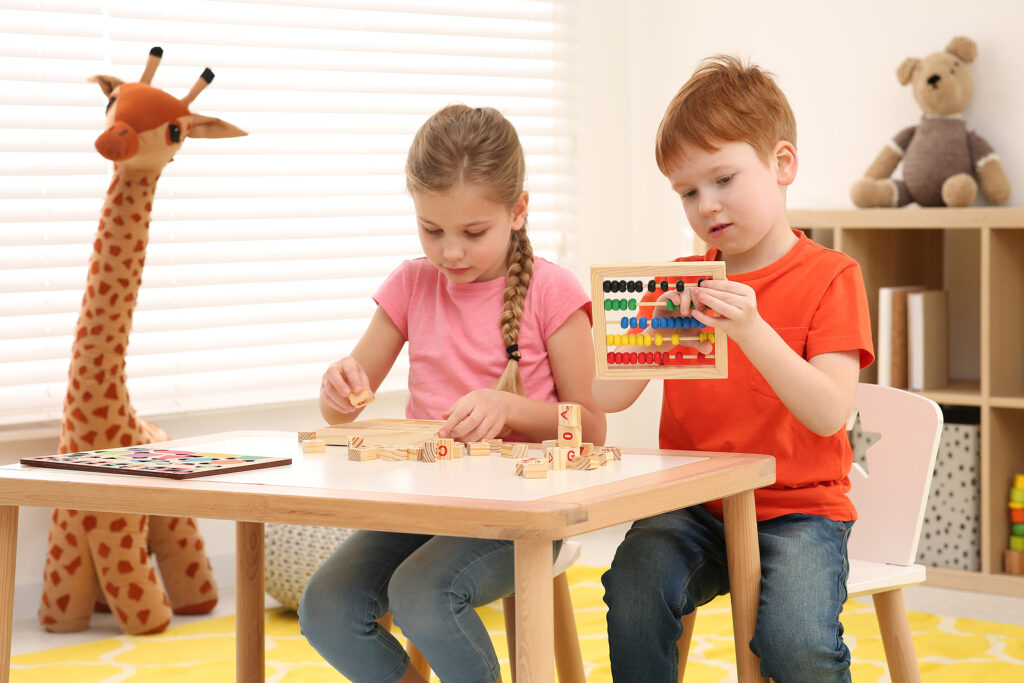
Materials and Tools You'll Need
To build your mud kitchen, gather the following materials and tools:
Materials:
- Old furniture (table, dresser, or cabinet)
- Exterior paint or wood stain
- Screws or nails
- Hooks and hinges
- Stainless steel or plastic bowls, pots, and utensils
- Waterproof sealant (optional)
- Chalkboard paint (optional)
Tools:
- Screwdriver or drill
- Paintbrushes
- Sandpaper
- Measuring tape
- Pencil
Step-by-Step Guide to Building Your Mud Kitchen
Follow these steps to transform your old furniture into a fantastic mud kitchen:
Step 1: Clean and Prepare the Furniture
Thoroughly clean the furniture, removing any dust, dirt, or existing finish. If necessary, sand down the surfaces to create a smooth base for painting or staining.
Step 2: Paint or Stain the Furniture
Apply exterior paint or wood stain to the furniture, choosing colors that are vibrant and appealing to children. Consider using multiple colors to create a playful and eye-catching design. Allow the paint or stain to dry completely.
Step 3: Modify the Furniture
Depending on the furniture you've chosen, you may need to make modifications to create functional play areas. For example:
- Add hooks or hinged doors for hanging utensils or creating storage spaces.
- Install a sink area by cutting out a section of the furniture and inserting a stainless steel or plastic basin.
- Attach shelves or small tables to create additional work surfaces.
Step 4: Attach Bowls, Pots, and Utensils
Using screws or nails, securely attach stainless steel or plastic bowls, pots, and utensils to the mud kitchen. Make sure they are within easy reach for children and that they are firmly fixed to avoid any accidents.
Step 5: Optional Enhancements
If desired, you can add extra features to make your mud kitchen even more engaging. Consider painting a chalkboard surface on one side for children to write menus or recipes, or attach a mirror for imaginative play.
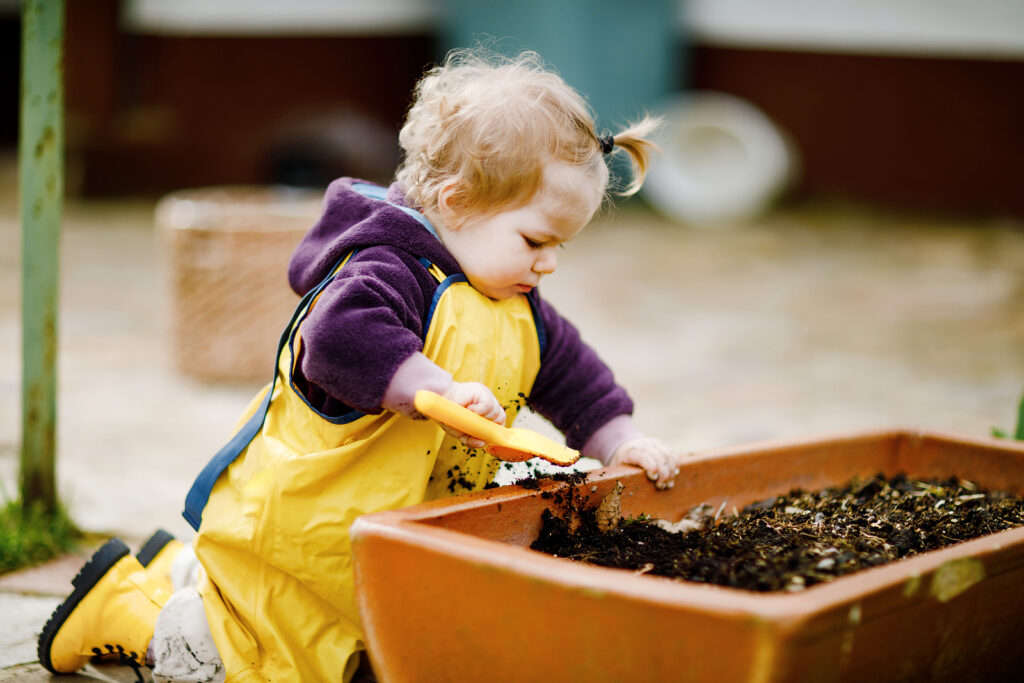
Safety Tips for Mud Kitchen Play
While mud play is incredibly fun, it's important to ensure the safety of children during their outdoor adventures. Here are some safety tips to keep in mind:
- Select non-toxic materials for the mud kitchen, including child-safe paints, stains, and sealants.
- Regularly inspect the mud kitchen for any sharp edges, loose screws, or potential hazards.
- Supervise children while they play in the mud kitchen, ensuring they understand basic safety rules, such as washing hands before and after play.
Enhancing Your Mud Kitchen: Creative Ideas and Add-Ons
To make your DIY mud kitchen even more exciting and versatile, consider these creative ideas and add-ons:
- Plant herbs or flowers around the mud kitchen to create a sensory and aromatic experience.
- Hang a chalkboard or whiteboard for children to jot down recipes or ideas.
- Attach a small shelf or pegboard for storing utensils, pots, and pans.
- Incorporate a water feature, such as a small pump or a recycled sink with running water.
Cleaning and Maintenance of Your Mud Kitchen
To ensure the longevity and cleanliness of your mud kitchen, follow these maintenance tips:
- Regularly clean the play surfaces and utensils, using mild soap and water.
- Inspect the mud kitchen for any signs of wear or damage, and make necessary repairs promptly.
- Apply a waterproof sealant to protect the wood if your mud kitchen is exposed to the elements.
Mud Kitchen Play Ideas for Children
Engage your children's imagination with these exciting play ideas for their mud kitchen:
- Mud Pies and Cakes: Encourage your little chefs to unleash their creativity by making delicious mud pies and cakes. Provide them with various natural materials like leaves, petals, twigs, and rocks to decorate their culinary creations.
- Nature Soup: Let children gather an assortment of natural materials such as leaves, flowers, twigs, and pebbles to create their own “nature soup.” They can mix these elements with water and mud in bowls or pots to concoct their imaginative recipes.
- Outdoor Tea Party: Set up an enchanting tea party in the mud kitchen. Children can use teapots, cups, and saucers filled with muddy water or colored water (using natural dyes like food coloring or plant extracts). Serve mud sandwiches made from mud patties between two leaves and mud desserts topped with flower petals.
- Mud Paintings: Provide children with brushes and a palette of colored mud made from natural dyes like ground-up flowers, berries, or spices mixed with water. Encourage them to create beautiful paintings on surfaces such as rocks, old pieces of wood, or even large leaves.
- Gardening Adventures: Utilize the mud kitchen as a springboard for gardening activities. Children can plant seeds in small pots or designated garden patches, learning about plant life cycles, watering, and caring for their growing plants. They can observe and document the changes they see over time.
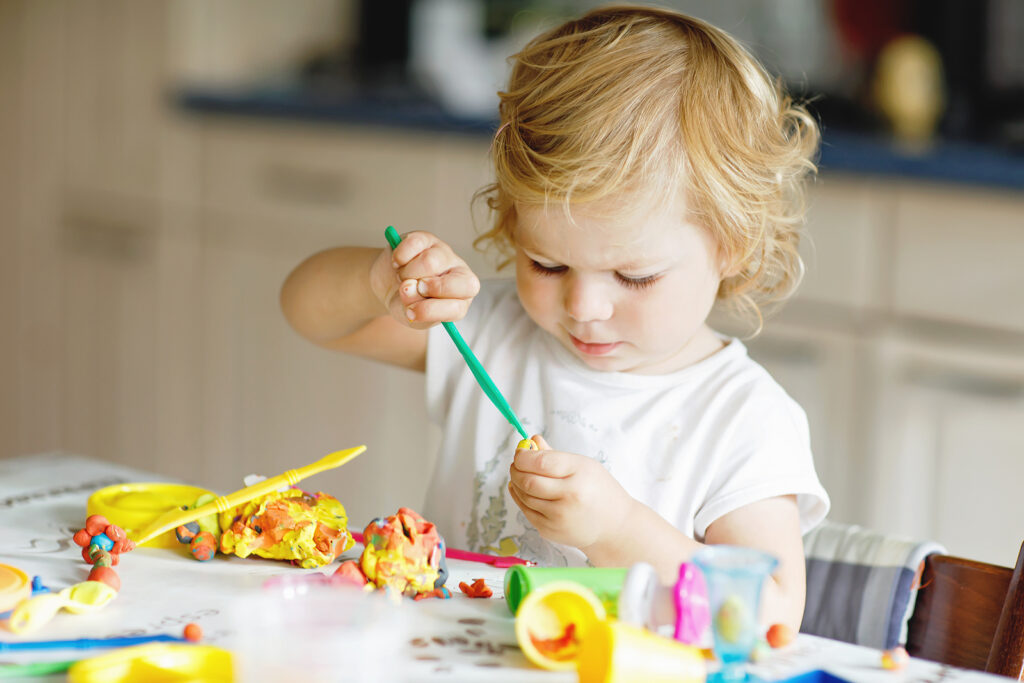
Benefits of Mud Kitchen Play for Child Development
Let's expand on the benefits of mud kitchen play for child development by providing more details and presenting them in a list format:
1. Sensory Exploration
Engaging in mud kitchen play provides children with rich sensory experiences that stimulate their senses and support sensory development. Here's how:
- Exploring Different Textures: Mud play exposes children to a variety of textures, such as wet and squishy mud, smooth stones, and rough sticks. This sensory input helps refine their tactile perception and increases their sensory awareness.
- Temperature Sensations: Handling mud of different temperatures, such as cool mud on a warm day or warm mud on a cool day, helps children understand and differentiate temperature sensations, enhancing their thermoregulation skills.
- Sensory Integration: Mud kitchen play involves multiple sensory inputs simultaneously, such as touch, sight, and sometimes smell. This integration of sensory information supports the development of sensory processing skills, helping children make sense of their surroundings.
2. Creativity and Imagination
Engaging in imaginative play is a fundamental aspect of childhood development. Mud kitchen play provides an open-ended and immersive play environment that nurtures creativity and imagination. Here's how:
- Role-Playing Opportunities: Children can take on various roles, such as chef, restaurant owner, or gardener, and create imaginative scenarios and narratives. They can pretend to cook and serve meals, run a mud bakery, or care for a mud garden, fostering their imaginative thinking and storytelling skills.
- Symbolic Play: Mud play allows children to use mud and natural materials as symbolic representations. They can transform mud into ingredients for magical potions, rocks into pretend food, or sticks into cooking utensils. This symbolic play enhances their cognitive abilities and symbolic thinking.
3. Fine Motor Skills
Mud kitchen play provides children with ample opportunities to develop and refine their fine motor skills. Here's how:
- Manipulating Mud and Materials: Scooping, pouring, stirring, and shaping mud with their hands or utensils require precise control and coordination of their fingers and hands, helping develop their fine motor skills.
- Handling Utensils: Using utensils, such as spoons, cups, and brushes, to interact with the mud and natural materials promotes dexterity, hand-eye coordination, and finger strength.
4. Problem-Solving
Mud kitchen play encourages children to think critically and engage in problem-solving as they navigate the challenges and opportunities presented by their play environment. Here's how:
- Organizing the Mud Kitchen Space: Children can arrange and organize their mud kitchen, deciding where to place utensils, materials, and play surfaces. This decision-making process involves spatial awareness, planning, and problem-solving skills.
- Experimenting with Mud Consistency: Children can adjust the consistency of mud by adding water, sand, or other natural materials, exploring cause-and-effect relationships and developing problem-solving skills.
5. Connection with Nature
Engaging in mud kitchen play provides children with a hands-on connection to the natural world, promoting environmental awareness and appreciation. Here's how:
- Exploring Natural Materials: Children have the opportunity to gather and interact with natural materials such as leaves, sticks, rocks, and flowers, fostering a connection with the outdoors and increasing their knowledge and appreciation of the natural environment.
- Understanding the Earth's Processes: Through mud play, children can observe how water interacts with soil, the impact of temperature on mud consistency, and the concept of decomposition as they observe the changes in natural materials over time. This firsthand experience helps develop their understanding of earth science concepts.
Mud Kitchen Safety Measures and Guidelines
To ensure a safe and enjoyable mud kitchen experience for children, it is important to follow these comprehensive safety measures:
- Supervision: Always supervise children during mud play to ensure their safety and address any potential risks or hazards that may arise. Provide guidance and set boundaries to prevent accidents or unsafe behavior.
- Appropriate Clothing: Dress children in play clothes that can withstand getting dirty and are suitable for outdoor activities. Avoid loose-fitting clothing that can get caught on objects. Consider providing aprons or smocks to protect their clothing from mud and stains.
- Hygiene Practices: Emphasize the importance of proper hygiene during and after mud play. Encourage children to wash their hands thoroughly with soap and water before and after engaging in mud kitchen activities. This helps prevent the spread of germs and keeps them healthy.
- Safe Utensils: Use child-safe utensils and tools in the mud kitchen. Avoid sharp objects or materials that may cause injuries, such as glass or metal containers. Opt for plastic or stainless steel bowls, spoons, and pots that are age-appropriate and free from sharp edges.
- Allergen Awareness: Be mindful of any potential allergens in the mud kitchen environment and materials used. Some children may have allergies to certain natural materials, such as pollen, plants, or insects. Conduct an assessment of the surroundings and avoid using allergenic plants or materials. If you are unsure about specific allergies, consult with parents or guardians beforehand.
Mud Kitchen Organization and Storage Ideas
Keeping your mud kitchen area organized and clutter-free is essential for a smooth and enjoyable play experience. Try these practical storage ideas to maintain a tidy and efficient mud kitchen space:
- Open Shelves: Install open shelves or repurpose crates to provide easy access to utensils, bowls, and other supplies. This allows children to quickly find what they need and promotes independent play.
- Hanging Baskets: Hang baskets or buckets on hooks or pegboards to store smaller items and tools. These baskets can hold items like measuring spoons, brushes, or small containers, keeping them within reach and minimizing clutter on the work surfaces.
- Storage Bins: Utilize labeled storage bins or containers to categorize and store various natural materials used in the mud kitchen. Sort materials such as leaves, pinecones, shells, or stones into separate bins, making them readily available for creative play.
- Pegboards and Hooks: Attach pegboards or hooks to the walls or backsplash of your mud kitchen. Hang aprons, towels, and gardening tools on the hooks for easy access. Pegboards offer versatility, allowing you to customize the layout and arrangement of tools and accessories.
- Waterproof Storage: Consider using weatherproof storage containers or bins to store utensils and play items, particularly during wet weather or when not in use. These containers will protect the items from rain or excessive moisture, ensuring they stay in good condition and ready for play.
Mud Kitchen Extension Activities for Learning and Exploration
Enhance the educational and exploratory aspects of your mud kitchen by incorporating these engaging activities:
- Mud Science Experiments
- Conduct simple science experiments using mud, water, and various materials to explore scientific concepts such as absorption, mixing, and viscosity.
- Experiment with different types of soil and observe how they affect the texture and consistency of the mud.
- Explore the properties of mud by creating “mud volcanoes” using baking soda and vinegar to demonstrate chemical reactions.
- Nature Scavenger Hunts
- Create nature-themed scavenger hunts to encourage children to collect specific items from their outdoor surroundings, such as rocks, leaves, flowers, or different types of soil.
- Use the collected items to inspire imaginative play in the mud kitchen, incorporating them into mud pies, sensory explorations, or natural art creations.
- Discuss the characteristics and functions of the natural materials found during the scavenger hunt, fostering a deeper understanding and appreciation of the environment.
- Math in the Mud
- Introduce mathematical concepts by incorporating measurement and quantity comparison activities into mud play.
- Provide measuring cups, spoons, and scales for children to measure and compare quantities of mud, water, and natural materials used in their recipes and creations.
- Encourage counting, sorting, and patterning with natural items such as stones, leaves, or sticks.
- Writing and Literacy
- Foster literacy skills by providing clipboards, paper, and writing materials for children to write menus, recipes, or stories related to their mud kitchen adventures.
- Encourage them to create labels for the different utensils, ingredients, or play areas in the mud kitchen.
- Engage in collaborative storytelling, where children take turns adding to a collective mud kitchen narrative.
- Mud Kitchen Olympics
- Organize friendly competitions or challenges within the mud kitchen to promote friendly competition, physical activity, and social interaction.
- Challenge children to build the tallest mud tower using various containers or molds.
- Time them as they race to create the fastest and most creatively decorated mud pie or mud cake.
- Arrange a “mud kitchen obstacle course” that incorporates crawling, balancing, and pouring challenges.
Conclusion
Creating a DIY mud kitchen from old furniture is a fantastic way to foster creativity and imaginative play in children while encouraging a connection with nature. By upcycling materials, you not only create a unique outdoor play space but also contribute to sustainability efforts. So, gather your old furniture, unleash your creativity, and let the mud-filled adventures begin!



